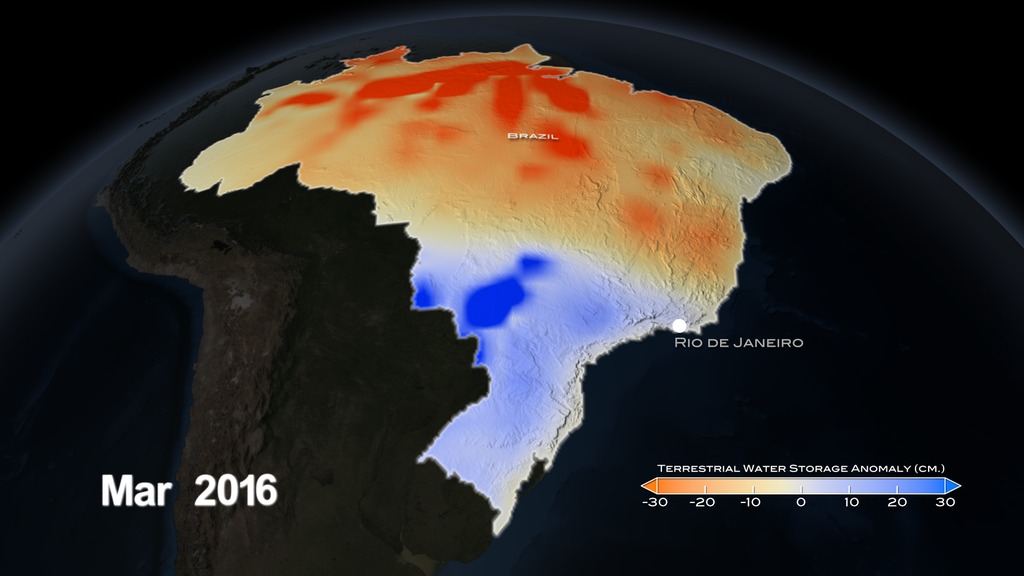A newer version of this visualization is available.
The Long Dry Spell

NASA satellites provide a new view from space of Brazil's ongoing drought.
Empty water reservoirs, severe water rationing, and electrical blackouts are the new status quo in major cities across eastern Brazil where the worst drought in 35 years has desiccated the region. A new NASA study estimates that eastern Brazil has lost an average 28 trillion gallons of water per year from 2012 to 2015. The findings are based on measurements from NASA's GRACE satellites. The two satellites orbit Earth in precise formation and detect changes in Earth's gravity field. Gravity field changes are caused by the movement of large masses of ice and water—including water in rivers and underground. By analyzing the amount of water stored in aquifers and rivers across Brazil from 2002 to 2015, scientists could better understand the depth of the current drought. Watch the video to learn more.
Explore how the distribution of water across Brazil has changed in recent years in this video.

Scientists have monitored Brazil’s water levels using NASA’s GRACE satellites since their launch in 2002.

Satellite measurements show eastern Brazil has experienced multiple dry and wet periods over the last 13 years.

Lack of rainfall and higher than usual temperatures have contributed to the current dry conditions in eastern Brazil, highlighted above.
For More Information
See NASA.gov
Credits
Please give credit for this item to:
NASA's Goddard Space Flight Center
-
Writer
- Ellen T. Gray (ADNET Systems, Inc.)
-
Animator
-
Alex Kekesi
(Global Science and Technology, Inc.)
-
Alex Kekesi
(Global Science and Technology, Inc.)
-
Scientist
- Augusto Getirana (ORAU)
-
Producers
- Joy Ng (USRA)
- Kayvon Sharghi (USRA)
-
Narrator
- Joy Ng (USRA)
Release date
This page was originally published on Tuesday, November 3, 2015.
This page was last updated on Wednesday, May 3, 2023 at 1:49 PM EDT.

